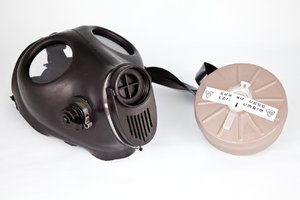Crystalline silica kills hundreds of workers and sickens thousands more in the U.S. each and every year. And that’s why officials with the Occupational Safety and Health Administration (OSHA) have proposed a rule to help curb this exposure. They’re looking to curb kidney disease, pulmonary disease, chronic silicosis and lung cancer. They want to do this by lowering employees’ exposure to crystalline silica.

“Exposure to silica can be deadly, and limiting that exposure is essential,” said Dr. David Michaels, assistant secretary of labor for the Occupational Safety and Health Administration.
Our Boston worker’s compensation lawyers understand that a rule like this could wind up saving about 700 lives and prevent more than 1,500 new cases of silicosis each and every year. Don’t think you’re at risk? Consider this: Exposure to airborne silica dust happens in jobs that involve crushing, drilling, sawing and the cutting of block, brick, concrete and other stone products as well as in operations in which sand products are used — like in sand blasting, foundries and glass manufacturing.
This recent proposal comes after an extensive review and study of the current OSHA standards regarding this matter. Officials say that these are common sense measures that are going to help to keep our workers safe and alive.
And this proposal comes with some flexibility. There’s one standard for those in the general industry, one for those in construction and one for those in maritime employment.
As it stands now, officials with OSHA are enforcing a 40-year-old permissible exposure limit (PEL) and this is the same rule for all industries. Unfortunately, it’s old and outdated. The new rule has been designed to step up the protection to 21st century technology.
Crystalline silica is an important industrial material found abundantly in the earth’s crust. It’s a mineral that occurs in several forms. Quartz, the most common form, is a component of stone, sand, concrete, rock, brick, mortar and block. Many of these materials are used every day in many industries my many workers, including construction, manufacturing, mining, agriculture and maritime.
Workers and employers need to be aware of the hazard that silica dust poses. Employers must ensure that workers are properly protected from exposure to silica.
Silicosis is a disease of the lungs due to the breathing of dust containing crystalline silica particles. This dust can cause fibrosis or scar tissue formations in the lungs that reduce the lung’s ability to work to extract oxygen from the air. There is no cure for this disease, thus, prevention is the only answer.
Engineering controls include such things as replacing silica with another material (substitution), isolating an exposure source, and using ventilation systems. Administrative actions include limiting workers’ exposure time and providing showers. Use of PPE includes wearing proper respiratory protection and protective clothing. The following references aid in controlling crystalline silica hazards in the workplace.
If you or someone you love has been injured on the job in Massachusetts, call Jeffrey Glassman Injury Lawyers for a free and confidential consultation to discuss your workers’ compensation claim– (617) 777-7777.
More Blog Entries:
Workers’ Parents Win $1M in Wrongful Death Suit, Massachusetts Worker’s Compensation Lawyers Blog, August 30, 2013
Miner Injuries and Fatalities on the Decline, Massachusetts Worker’s Compensation Lawyers Blog, August 14, 2013
 Massachusetts Workers Compensation Lawyers Blog
Massachusetts Workers Compensation Lawyers Blog

